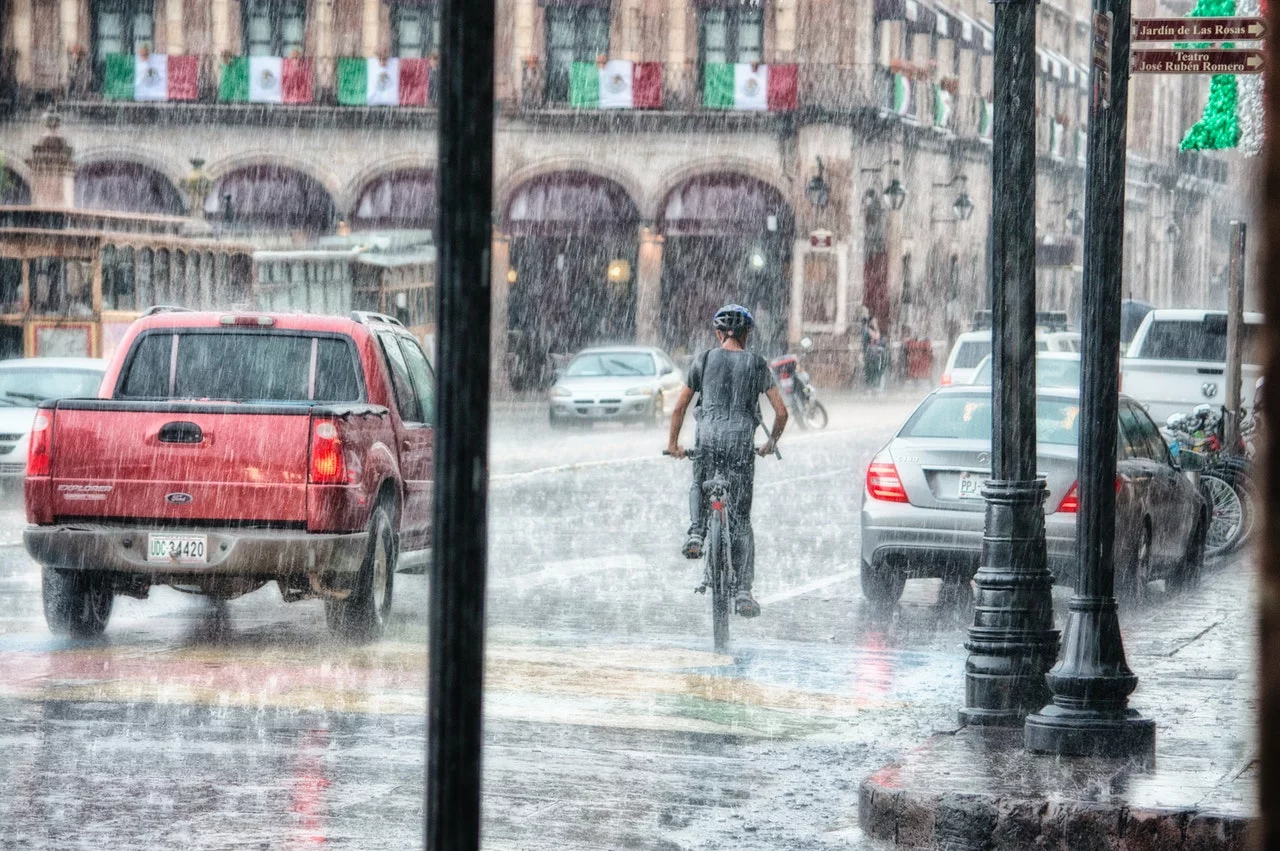UPDATED: APRIL 27, 2023 | 2 MIN READ

During flash floods, hurricanes, or heavy rainstorms, rising water levels can seep into vehicle engines and interiors, causing substantial damage. Flooded cars may be severely damaged, need immediate repair, or be deemed a total loss.
The good news is that car insurance does cover flood damage if comprehensive coverage is included in your policy. Read on to learn more about comprehensive coverage and how to get flood damage covered by insurance.
How Can Flood Waters Damage or Ruin Your Vehicle?
Flooding is likely to cause damage to your car regardless of where and how much water gets into the vehicle. More water may mean more severe damage, but even the slightest amount of water exposure can have damaging effects.
Water damage can cause cosmetic issues such as rust, mold, and foggy lights. While these have no direct effect on the car’s capacity to drive, they can depreciate the value of your car if you intend to sell it later.
The more significant damages to a vehicle include engine seizure, transmission failure, warped brakes, and airbag failure.
These issues concern the mechanical systems of your car and limit the basic safety features necessary to operate a vehicle. Driving despite these issues should never happen, no matter the circumstance.
If your car is flooded, do not start the vehicle until it is cleaned and inspected by a professional. Turning on the engine can cause more damage if it is exposed to water.
You should first record the highest point of water exposure and then attempt to dry the interior as much as possible.
Contact your insurance company immediately to report the damage, and then contact a car technician to arrange an inspection.
What Kind of Auto Insurance Coverage Protects Against Flood Damage?
The only coverage that protects against flood damage is comprehensive. Comprehensive coverage is additional car insurance coverage that pays for damages to your car that were not caused by a collision. This includes theft, vandalism, hail, fires, and water damage.
Comprehensive coverage is not legally mandated but is highly recommended for all car owners. You can purchase comprehensive coverage with collision coverage or comprehensive coverage on its own.
It’s important to note that many insurers have binding restrictions when adding comprehensive coverage to your policy.
This means that insurers will limit when you can add a policy to your plan if a major weather event is expected to occur.
So, if you’re interested in comprehensive coverage, be sure to add it to your plan in time for the next major storm in your area.
Comprehensive coverage has a deductible, and you can choose between $250 and $1,500 depending on where you live and what vehicle you own.
Comprehensive policies typically have a limit, so insurers will only pay for damage up to your car’s actual cash value.
High-value newer or luxury vehicles will be more expensive to repair if damaged. Therefore, insurance companies will typically charge higher premiums.
Some drivers may opt for comprehensive coverage if their vehicle is older or valued lower. This is because paying for comprehensive coverage may not be financially reasonable if the car isn’t worth much.
However, there are certain circumstances where carrying comprehensive coverage is necessary. If you are leasing or financing a car, you will likely be required to have comprehensive coverage.
If you own a car worth more than $4,000, you should consider adding comprehensive coverage to your auto insurance plan.
Filing a Comprehensive Coverage Claim for Flood Damage
It’s vital to document your car’s floodwater damage as soon as possible. Take pictures of your vehicle at all angles, and be sure to record the highest level of water exposure.
Documenting these details will help a technician understand the severity of the damage and what repairs are necessary.
It’s not always necessary to file a claim if the damage is minor, and paying for repairs out-of-pocket would cost less than paying your deductible. It’s important to take the total cost of repairs into consideration because filing an auto insurance claim could raise your premium.
If you do decide to file a claim, you should do so as soon as possible. In natural disasters, hundreds or even thousands of claims are filed all at once. The faster you file your claim, the faster it will be processed.
To make the claims filing process easier on yourself and the insurer, make sure you submit paperwork on time, double-check estimates, and keep records of your vehicle upkeep.
FAQs
Does car insurance cover water damage?
Comprehensive coverage covers water damage to your vehicle. It also covers losses from hail, wind, and even trees falling on your car during a storm.
Does car insurance cover flood damage?
If you have comprehensive coverage on your auto insurance policy, your car is covered for flood damage. Comprehensive coverage isn’t mandated by law. It’s a coverage you have to add separately.
Do I have to carry comprehensive coverage on my car insurance policy?
The state doesn’t require comprehensive coverage. However, if you’re financing or leasing your vehicle, the lender will require you to carry comprehensive collision coverage. These two coverages combined are commonly known as full coverage. If you own your car outright, you should consider carrying comprehensive coverage if your car is valued at $4,000 or more.
The Bottom Line
If you carry comprehensive coverage on your car insurance policy, your car is covered if it’s flooded. Comprehensive coverage is considered additional coverage, though. To ensure you’re adequately insured, compare auto insurance rates and options today.